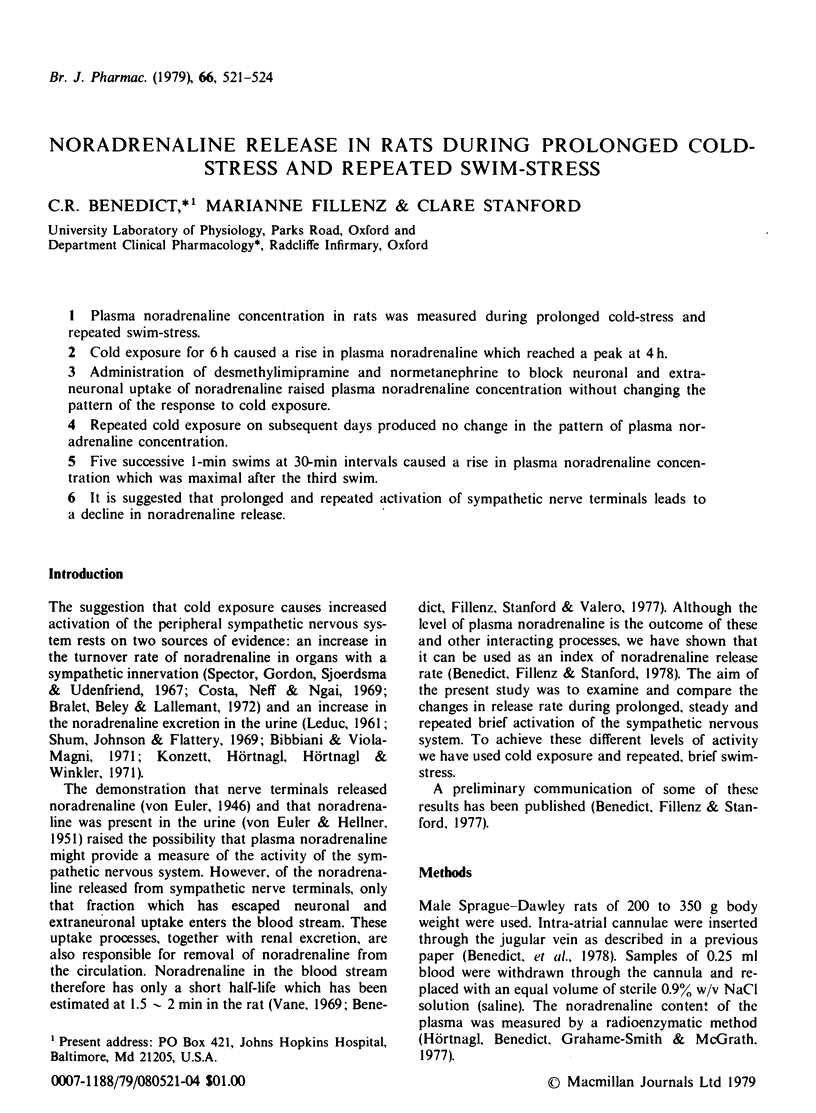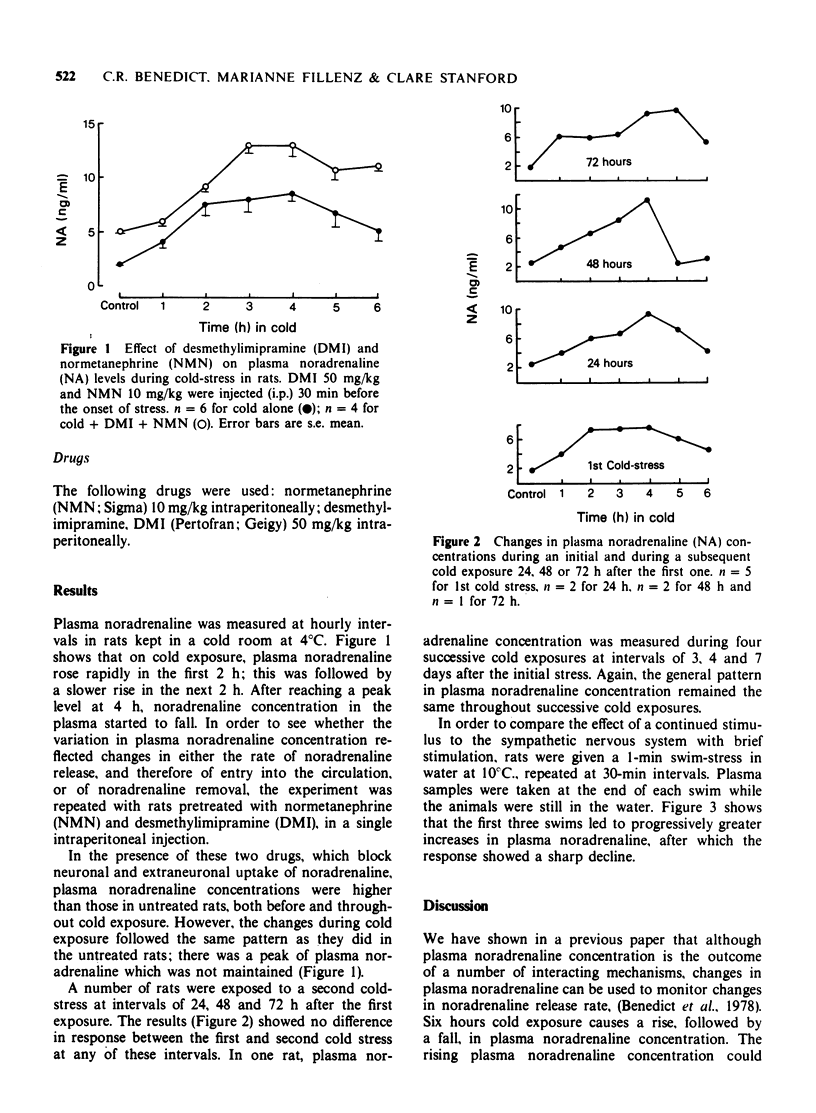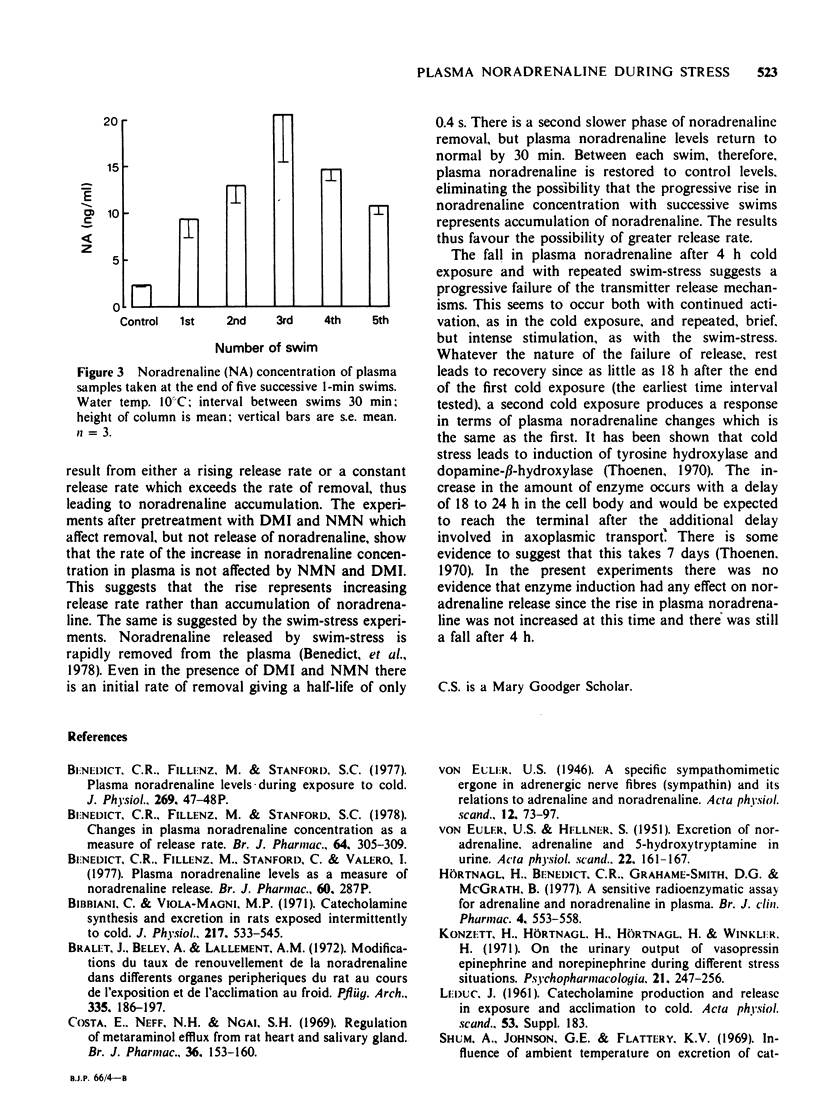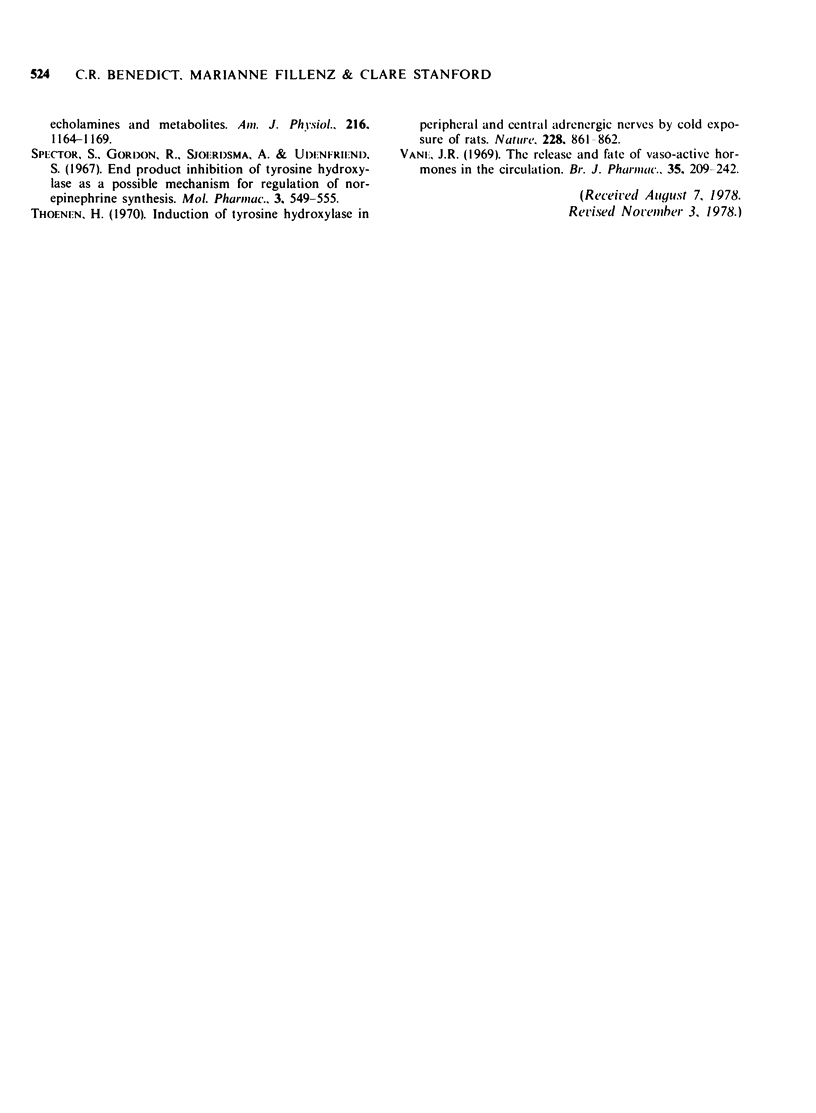Abstract
1 Plasma noradrenaline concentration in rats was measured during prolonged cold-stress and repeated swim-stress. 2 Cold exposure for 6 h caused a rise in plasma noradrenaline which reached a peak at 4 h. 3 Administration of desmethylimipramine and normetanephrine to block neuronal and extra-neuronal uptake of noradrenaline raised plasma noradrenaline concentration without changing the pattern of the response to cold exposure. 4 Repeated cold exposure on subsequent days produced no change in the pattern of plasma noradrenaline concentration. 5 Five successive 1-min swims at 30-min intervals caused a rise in plasma noradrenaline concentration which was maximal after the third swim. 6 It is suggested that prolonged and repeated activation of sympathetic nerve terminals leads to a decline in noradrenaline release.
Full text
PDF



Selected References
These references are in PubMed. This may not be the complete list of references from this article.
- Benedict C. R., Fillenz M., Stanford C. Changes in plasma noradrenaline concentration as a measure of release rate. Br J Pharmacol. 1978 Oct;64(2):305–309. doi: 10.1111/j.1476-5381.1978.tb17305.x. [DOI] [PMC free article] [PubMed] [Google Scholar]
- Benedict C. R., Fillenz M., Stanford C., Valero I. Plasma noradrenaline levels as a measure of noradrenaline release [proceedings]. Br J Pharmacol. 1977 Jun;60(2):287P–287P. [PMC free article] [PubMed] [Google Scholar]
- Bibbiani C., Viola-Magni M. P. Catecholamine synthesis and excretion in rats exposed intermittently to cold. J Physiol. 1971 Sep;217(3):533–545. doi: 10.1113/jphysiol.1971.sp009584. [DOI] [PMC free article] [PubMed] [Google Scholar]
- Bralet J., Beley A., Lallemant A. M. Modifications du taux de renouvellement de la noradrénaline dans différents organes périphériques du rat au cours de l'exposition et de l'acclimatation au froid. Pflugers Arch. 1972;335(3):186–197. doi: 10.1007/BF00592156. [DOI] [PubMed] [Google Scholar]
- Costa E., Neff N. H., Ngai S. H. Regulation of metaraminol efflux from rat heart and salivary gland. Br J Pharmacol. 1969 May;36(1):153–160. doi: 10.1111/j.1476-5381.1969.tb08312.x. [DOI] [PMC free article] [PubMed] [Google Scholar]
- Hörtnagl H., Benedict C. R., Grahame-Smith D. G. A sensitive radioenzymatic assay for adrenaline and noradrenaline in plasma. Br J Clin Pharmacol. 1977 Oct;4(5):553–558. doi: 10.1111/j.1365-2125.1977.tb00785.x. [DOI] [PMC free article] [PubMed] [Google Scholar]
- Spector S., Gordon R., Sjoerdsma A., Udenfriend S. End-product inhibition of tyrosine hydroxylase as a possible mechanism for regulation of norepinephrine synthesis. Mol Pharmacol. 1967 Nov;3(6):549–555. [PubMed] [Google Scholar]
- Vane J. R. The release and fate of vaso-active hormones in the circulation. Br J Pharmacol. 1969 Feb;35(2):209–242. doi: 10.1111/j.1476-5381.1969.tb07982.x. [DOI] [PMC free article] [PubMed] [Google Scholar]


